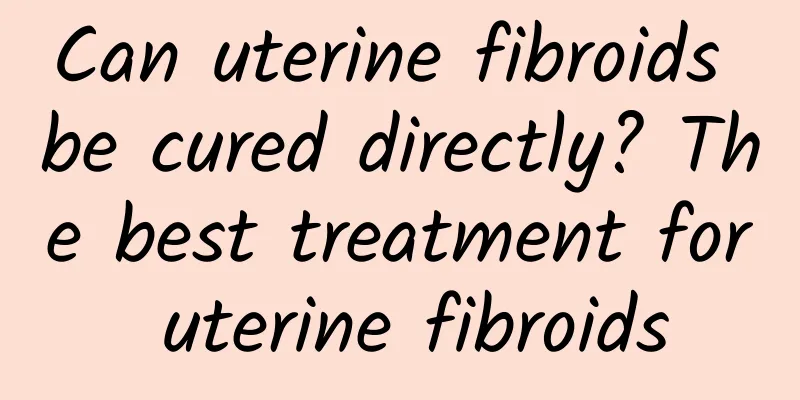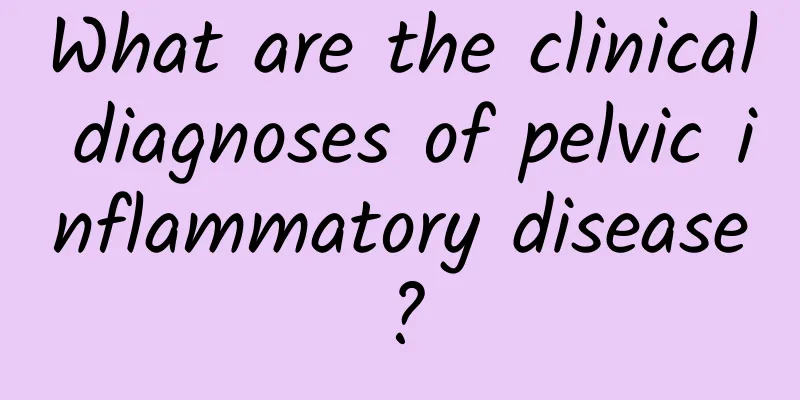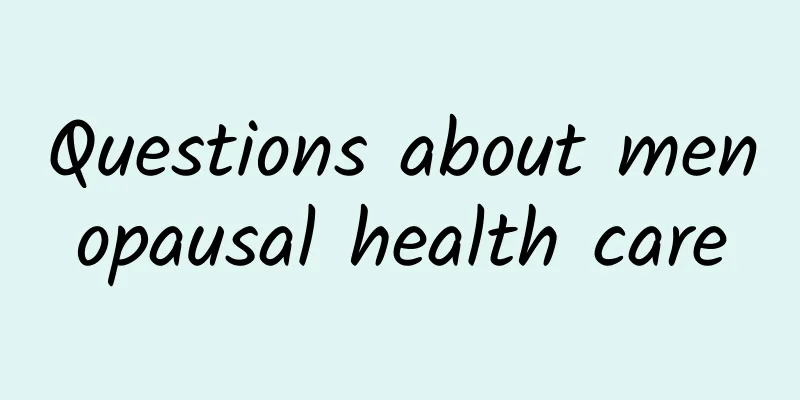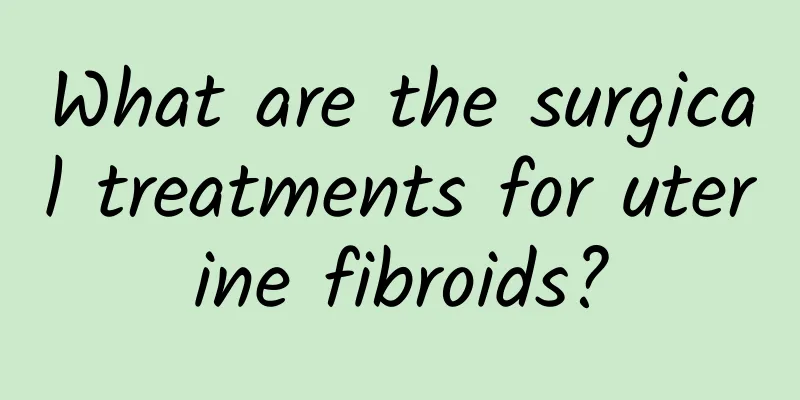Can uterine fibroids be cured directly? The best treatment for uterine fibroids

|
One day, my sisters came to my specialist clinic. They both had uterine fibroids, but I gave them different treatment plans: my elder sister had surgery and my younger sister had conservative treatment. The patients were confused, why were they both fibroids but had different treatment plans? Fang Fang, deputy chief physician of gynecology department, Obstetrics and Gynecology Hospital, Fudan University Uterine fibroids are one of the most common benign tumors in the female reproductive system. According to statistics, at least 20% of women of childbearing age suffer from uterine fibroids, and an increasing number of young unmarried women also suffer from uterine fibroids. The mother of the two sisters mentioned above suffered from uterine fibroids and recovered well after hysterectomy. Therefore, the two sisters have some psychological shadows. They are only in their 30s. If they want to remove the uterus, it is difficult to accept. After a routine examination of the sisters, it was found that the sister's uterus was enlarged. For example, when she was 2 months pregnant, there were 4 fibroids on the uterus, with a diameter of 1~3cm, located in the myometrium or protruding outward (we call it myometrial/subserosal fibroids). Although the elder sister had several fibroids, they were not large and did not cause abnormal menstruation. According to the elder sister's condition, I suggested that she follow up regularly, take Chinese patent medicine (such as Guizhi Fuling capsules/pills, etc.), check every six months, observe the changes in fibroids, and pay attention to whether the menstruation is abnormal. The elder sister told me that her menstruation has been irregular in the past two years, and her menstrual period has become longer and longer. Sometimes it takes more than ten days to end, and the amount of menstruation has also increased compared with before. The examination found that her uterus was basically normal in size, but there was a fibroid with a diameter of nearly 2cm protruding into the uterine cavity (we call it a submucosal fibroid). According to the elder sister's condition, I suggested that she have surgery. Because the fibroids protrude into the uterine cavity, we can use hysteroscopic minimally invasive surgery to remove it. There will be no scars on the abdomen, and menstruation will return to normal soon after the operation. From this example, we can see that the treatment of uterine fibroids is not all "one size fits all", and even surgery does not require the removal of the uterus. Generally speaking, if the fibroids are not large and there are no obvious symptoms of abnormal menstruation, especially for women approaching menopause, regular check-ups can be performed, and the fibroids can gradually shrink or disappear after menopause. If the fibroids are large, causing the uterus to enlarge for more than two and a half months of pregnancy, or if the menstruation increases and the prolonged menstruation leads to anemia, surgical treatment is required; if it is a submucosal fibroid, even if it is only 1 to 2 cm in size, there will be obvious menstrual abnormalities and surgery is required. Hysterectomy or myomectomy can be performed according to age, fertility requirements or patient wishes. In recent years, minimally invasive surgery has developed rapidly, and most surgeries can be completed through laparoscopic or hysteroscopic minimally invasive surgery. At present, drugs for treating uterine fibroids do not have very satisfactory effects. Most of them are treated with traditional Chinese medicine or Chinese patent medicine, but they can only slow down the growth of fibroids or melt very small fibroids, and cannot be expected to shrink or eliminate larger fibroids. Other drugs, such as androgens, gonadotropin-releasing hormone analogs (leuprorelin, goserelin, etc.), progesterone antagonists (mifepristone), etc., although they can reduce bleeding or reduce fibroids, have corresponding side effects and cannot be used for a long time. They are generally only used in cases of overdose, severe anemia or impending menopause. |
<<: How to treat uterine fibroids? What are the methods of treating uterine fibroids?
Recommend
Tired of plain chicken breast? 3. Change the way of eating to get new taste
Chicken + Pre-cooking: Grilled Chicken Breast Gri...
Uterine fibroids are more dangerous after pregnancy
Generally speaking, women with uterine fibroids c...
How to treat chronic cervicitis in women? 4 major methods of rehabilitation treatment of chronic cervicitis in women
After people find that they have chronic cervicit...
What medicine can I take to recover from uterine fibroids? What medicine can I take to recover from uterine fibroids quickly?
Uterine fibroids are common benign tumors in gyne...
What are the causes of dysmenorrhea?
What are the causes of dysmenorrhea? Dysmenorrhea...
What is the reason for menstruation after amenorrhea?
What happens when menstruation comes back after a...
Women with cervical erosion are prone to these 3 symptoms
In life, many women are troubled by cervical eros...
Habitual miscarriage is caused by these 5 factors
There are many reasons for women to have habitual...
Introduction to several effective dietary treatments for irregular menstruation
Diet therapy is a safe and reliable treatment for...
What to do if you have ovulation bleeding
What should you do if you have ovulation bleeding...
Lose weight without burden ~ Eat mindfully and lose weight
Weight loss and nutrition have always been topics...
Chronic adnexitis may cause infertility
Chronic adnexitis may cause infertility. If peopl...
Which hospital is good for treating congenital absence of vagina?
At present, the cost of medicines has increased s...
Ovarian cyst first medical record template
Ovarian cysts can be divided into many types, and...
Lose fat and lose weight after exercise? A cup of sugar-free soy milk + tea egg
Sports and fitness are in fashion! In order to re...









